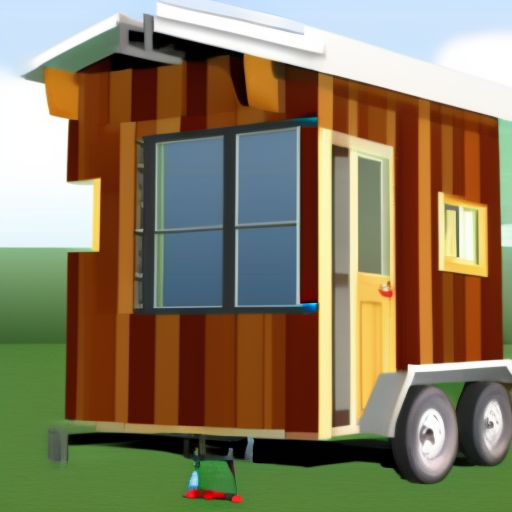Are you ready to take on a challenging – yet rewarding – DIY project that offers an entirely novel way to live? Designing a tiny house is the perfect opportunity to showcase your creative capabilities and pursue an extremely unique lifestyle. Whether you’re an experienced DIY-er or a complete beginner, this article about tiny house design will provide you with all you need to get started on your tiny home journey.
Gaining Popularity
Everyone wants to be liked, and this is especially true in today’s society. As social media platforms continue to evolve, more and more people are looking for ways to gain popularity online. Whether it’s by creating viral content, building a loyal following, or simply being noticed by the right people, has become a top priority for many.
So how do you gain popularity? Well, there’s no one-size-fits-all approach, but there are a few things you can do to increase your chances of success. First, be authentic. People can tell when you’re being fake, and no one likes a poser. Second, find your niche. Whether it’s cooking, fashion, or travel, find something you’re passionate about and share it with the world. Finally, engage with your audience. Respond to comments, share their content, and show your followers that you care.
- Be authentic
- Find your niche
- Engage with your audience
Take John Legend, for example. He’s gained popularity not just because of his incredible talent, but because he’s also incredibly authentic. He shares his personal life with his followers, from his wife and children to his political views. He’s found his niche in music but also in speaking out on social issues, which has earned him even more followers who share his values. And he’s constantly engaging with his audience, responding to comments and even hosting impromptu live concerts on social media.
So whether you’re a musician like John Legend or just trying to gain popularity online for your business or brand, remember to stay true to yourself, find your niche, and most importantly, engage with your audience.
Understanding Essential Elements
Essential elements are the building blocks of many things in our lives, from the air we breathe to the food we eat. Understanding these elements is essential in our day-to-day lives. In chemistry, essential elements refer to the 20-odd elements that make up most of the things on our planet.
One critical essential element is oxygen. This element is fundamental as it helps us in sustaining life by breathing. Notably, oxygen is not only found in air but also in water bodies such as oceans, rivers, and lakes. Another essential element is carbon because it is the element that forms the backbone of life. Carbon is responsible for the creation of organic molecules such as proteins, which form the building blocks of our bodies. These are some crucial essential elements that we encounter in our day-to-day lives.
Design Considerations
When it comes to , it’s important to think about the practicality, aesthetics, and user experience. One key factor to consider is the color scheme – you want it to be visually appealing but also convey the right emotion. For example, if you’re creating a website for a childcare center, you may want to use bright, cheerful colors like yellow and orange to represent happiness and positivity.
Another consideration is the functionality of the design. Does it flow well and make sense to the user? Are buttons and links easy to click on and navigate? A common mistake is to overload a design with too many elements, leading to a cluttered and confusing layout. Instead, prioritize the most important information and incorporate white space to give the eyes a rest. By keeping in mind the practicality and functionality of your design, you can create a visually stunning and user-friendly experience that will keep people coming back for more.
DIY Challenges
Are you up for a challenge? If you’re ready to put your DIY skills to the test, you’ve come to the right place. We’ve got some exciting challenges that will take your creativity to the next level.
Why should you take on these challenges? Well, for one, you’ll learn a new skill or two. You’ll also get the satisfaction of completing a project that you can be proud of. And who knows, you might even save some money in the process. Here are a few of our favorite :
- Upcycling Challenge: Take something old or unused and turn it into something new and useful. For example, turn an old tire into a planter, or a broken ladder into a bookshelf.
- No-Sew Challenge: Create something without using a needle and thread. For example, make a no-sew t-shirt tote bag or a no-sew fleece blanket.
- Woodworking Challenge: Build something with wood. For example, make a wooden bench or a coffee table.
Don’t be afraid to get creative and come up with your own . And remember, it’s not about being perfect, it’s about having fun and learning along the way. So grab your tools and let’s get started!
Completing a Tiny House project can be a daunting task for even the most experienced DIY-er. With the right tools, materials, and planning – the sky is the limit in creating a unique and comfortable space. So don’t wait to get started – your Tiny House awaits!